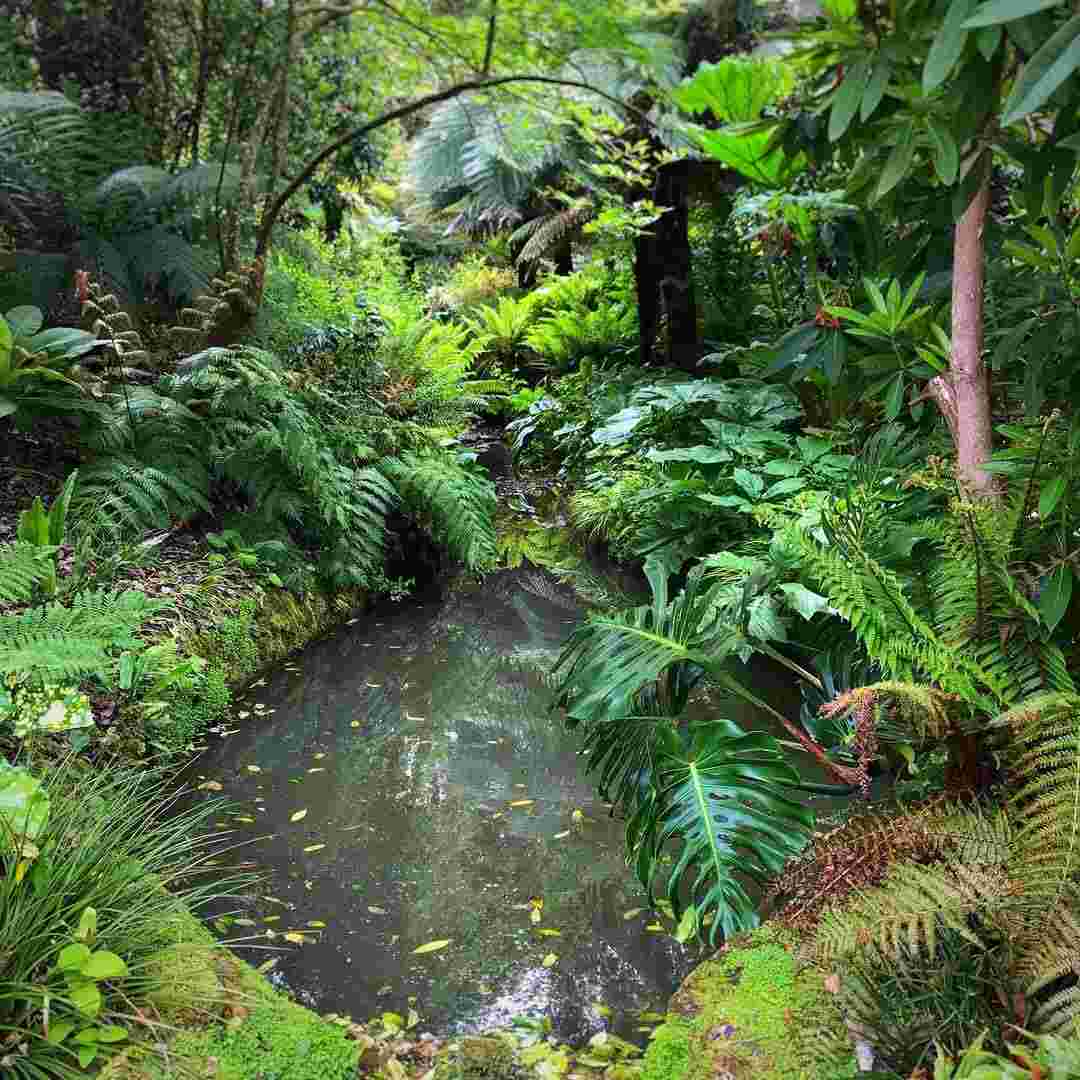Monstera in the wild presents a fascinating glimpse into the natural environment where this iconic tropical plant thrives. Known for its large, fenestrated leaves, Monstera species flourish in the lush rainforests of Central and South America, adapting uniquely to their surroundings. Understanding its natural habitat is essential for gardeners and plant enthusiasts aiming to replicate ideal growing conditions indoors or in gardens.
In its native environment, Monstera thrives under a dense canopy with filtered sunlight, high humidity, and well-draining soil rich in organic matter. This introduction explores where Monstera grows naturally and the ecological factors influencing its growth, providing insight into the plant’s remarkable adaptations and survival strategies.

Monstera’s Origins
Native Range and Species Diversity
Monstera originates primarily from the tropical rainforests of Central and South America, spanning countries like Mexico, Guatemala, Panama, and Colombia. The genus includes over 40 species, with Monstera deliciosa being the most famous due to its popularity as a houseplant. These species have evolved over millions of years, adapting to the humid, shaded environments of their native jungles.
Evolutionary Adaptations
Monstera’s iconic split and perforated leaves, known as fenestrations, are an evolutionary adaptation to the dense forest canopy. These fenestrations allow light to pass through to lower leaves, reduce wind resistance during storms, and help shed heavy rainfall efficiently. Such adaptations highlight Monstera’s long history in complex rainforest ecosystems.
Ecological Role
In its natural habitat, Monstera plays an important role within the forest structure. It often grows as an epiphyte or hemiepiphyte, climbing trees to reach sunlight while its roots anchor in nutrient-rich forest soil. This climbing habit aids in forest regeneration by creating habitats for insects and small animals, contributing to the overall biodiversity of tropical rainforests.
Climate and Seasonal Changes in Monstera’s Natural Habitat
Tropical Climate Characteristics
Monstera naturally grows in warm, humid tropical climates with consistent temperatures averaging between 20°C to 30°C (68°F to 86°F). These regions experience high humidity levels, often above 70%, which support the plant’s moisture needs. Rainfall is frequent, typically exceeding 1500 mm annually, ensuring the soil remains moist but well-drained, essential for Monstera’s root health.
Seasonal Variations and Adaptations
While tropical rainforests maintain relatively stable conditions year-round, there are subtle seasonal changes. Many Monstera habitats experience a wet season and a slightly drier season. During the wet season, increased rainfall promotes vigorous growth and leaf development. In the drier season, Monstera may slow down growth but remains green due to its evergreen nature, benefiting from the residual humidity in the forest environment.
Impact on Growth and Reproduction
Seasonal changes influence Monstera’s flowering and fruiting cycles. Flowering often coincides with the transition from wet to dry seasons, optimizing pollination by tropical beetles and other insects. The climate stability and seasonal moisture availability allow Monstera to thrive as a resilient species, perfectly tuned to its rainforest environment’s rhythms.
Soil Composition and Drainage: The Key to Monstera’s Success
Ideal Soil Characteristics
In the wild, Monstera thrives in rich, well-draining soil composed mainly of organic matter such as decomposed leaves, bark, and other forest debris. This humus-rich substrate provides essential nutrients while retaining moisture without becoming waterlogged. The natural soil tends to be slightly acidic to neutral, with a pH range of 5.5 to 7.0, which supports nutrient availability and root health.
Drainage and Aeration
Good drainage is critical for Monstera, as its roots are prone to rot in overly saturated conditions. The wild soil’s loose, airy texture ensures excess water drains quickly, while still holding enough moisture for sustained hydration. This balance allows Monstera roots to breathe and absorb oxygen, promoting healthy growth and preventing fungal diseases.
Nutrient Cycling and Microbial Activity
Monstera’s success in its native habitat also depends on a vibrant soil ecosystem rich in beneficial microbes and fungi. These organisms break down organic material, releasing nutrients in forms accessible to the plant. Mycorrhizal fungi form symbiotic relationships with Monstera roots, enhancing nutrient uptake, particularly phosphorus and nitrogen, which are vital for leaf and stem development. This natural nutrient cycling sustains Monstera’s vigorous growth in the wild.
The Role of Elevation in Monstera Growth
Elevation Range and Distribution
Monstera species typically grow at low to mid-elevations, generally ranging from sea level up to about 1,500 meters (4,900 feet) above sea level. In these elevations, the climate remains warm and humid, closely matching the tropical conditions Monstera requires. Some species are more specialized, thriving only within narrow elevation bands where temperature and humidity levels are optimal.
Effects of Elevation on Climate Factors
Elevation influences key environmental factors such as temperature, humidity, and light intensity. As elevation increases, temperatures tend to drop and humidity may fluctuate. Monstera plants at higher elevations often experience cooler nights and slightly reduced humidity compared to those at sea level. This can slow growth rates but may also reduce the risk of pests and diseases common in warmer, lowland rainforests.
Adaptations to Elevation Variability
Monstera’s ability to grow across a range of elevations reflects its ecological versatility. At higher elevations, plants may develop thicker leaves or slower growth to conserve resources under cooler conditions. Meanwhile, at lower elevations, rapid growth and larger leaves maximize photosynthesis in the dense forest understory. Understanding elevation’s role helps gardeners mimic natural conditions for healthier Monstera cultivation.
Monstera’s Natural Companions and Co-Habitants
Symbiotic Relationships in the Forest
Monstera shares its natural habitat with a diverse community of plants and animals, forming complex ecological networks. Epiphytic orchids and ferns often grow alongside or on the same host trees as Monstera, benefiting from similar light and moisture conditions. These plants collectively contribute to the dense, multilayered rainforest canopy, creating microhabitats that support numerous species.
Animal Interactions and Pollinators
Monstera relies on specific animal species for pollination and seed dispersal. Tropical beetles and certain flies are primary pollinators attracted to Monstera’s flowers, which emit strong scents during blooming. Fruit-eating birds and mammals, such as bats and monkeys, consume Monstera’s fleshy fruits and disperse its seeds through their droppings, aiding in the plant’s reproduction and spread across the forest.
Ecological Importance of Co-Habitants
The presence of diverse flora and fauna supports Monstera’s growth by maintaining soil health, regulating humidity, and controlling pests. Decomposers like fungi and insects break down organic matter, enriching the soil with nutrients that Monstera and its companions rely on. This intricate web of interactions illustrates Monstera’s integration into its ecosystem, highlighting its role beyond just a striking plant but as part of a balanced rainforest community.
How Monstera Adapts to Stressful Conditions in the Wild
Drought and Water Scarcity Adaptations
Although Monstera thrives in humid rainforests, it can endure brief dry spells through several adaptations. Its thick, waxy leaves help reduce water loss by minimizing transpiration. Additionally, Monstera’s fenestrated leaves reduce surface area exposed to intense sunlight and wind, protecting the plant from dehydration during drier periods.
Coping with Low Light and Competition
Monstera’s natural climbing habit allows it to reach higher levels of the forest canopy, accessing more sunlight in densely shaded environments. Its ability to produce large, perforated leaves maximizes light capture without requiring excessive energy to develop solid leaf tissue. This adaptation helps Monstera outcompete understory plants struggling for light in crowded forests.
Resistance to Pests and Physical Damage
In the wild, Monstera faces threats from herbivores and mechanical damage caused by storms or falling debris. Its tough, leathery leaves deter many insects and animals, while the splits and holes reduce damage from strong winds by allowing air to pass through. These structural features increase Monstera’s resilience, ensuring its survival in challenging natural conditions.
Conservation Efforts for Monstera in Its Natural Habitat
Threats to Wild Monstera Populations
Despite its popularity as a houseplant, Monstera faces threats in the wild due to habitat loss from deforestation, agriculture, and urban expansion. Illegal plant collection for commercial trade also pressures some native populations. These factors contribute to fragmented habitats and reduced genetic diversity, putting Monstera species at risk in certain areas.
Protected Areas and Reforestation Initiatives
Conservation efforts focus on preserving tropical rainforest ecosystems where Monstera naturally occurs. Numerous protected areas and national parks across Central and South America safeguard critical habitats. Reforestation projects aim to restore degraded lands, enhancing habitat connectivity and providing suitable conditions for Monstera and associated species to thrive once again.
Community Involvement and Sustainable Practices
Local communities play a vital role in conservation by promoting sustainable harvesting, education, and ecotourism. Cultivating Monstera through responsible propagation programs reduces pressure on wild plants, supporting both conservation and local economies. Collaborative efforts between governments, NGOs, and researchers continue to develop strategies ensuring Monstera’s long-term survival in its natural habitat.
How to Care for Monstera at Home, Inspired by the Wild
Mimicking Natural Light and Humidity
To recreate Monstera’s native environment indoors, provide bright, indirect light similar to the dappled sunlight under rainforest canopies. Avoid direct sun, which can scorch leaves. Maintaining humidity around 60-80% is ideal; using humidifiers or placing the plant near water sources helps replicate the moist tropical atmosphere Monstera thrives in.
Soil and Watering Practices
Use a well-draining, nutrient-rich soil mix rich in organic matter, such as peat combined with orchid bark and perlite, to mimic the forest floor’s humus-rich substrate. Water the plant thoroughly but allow the top inch of soil to dry out before watering again, preventing root rot while keeping roots moist like in its natural habitat.
Support and Growth Encouragement
Monstera is a natural climber; providing a moss pole or trellis mimics the trees it climbs in the wild. This support encourages larger leaves and healthier growth. Regularly misting the leaves and cleaning dust off helps maintain leaf function, reflecting the natural rainfall and moisture in tropical forests.
Final Thoughts
Monstera’s natural habitat offers invaluable insights into how this remarkable plant thrives under tropical conditions. By understanding its origins, climate preferences, and ecological relationships, gardeners can better support healthy growth at home.
Embracing Monstera’s wild adaptations—from humidity needs to climbing habits—allows for more authentic care. Protecting its native environments ensures future generations can continue to enjoy this iconic tropical species both in nature and in our homes.

I’m Shofi, a passionate gardener and blogger. I have 10+ years of experience in gardening and hold certifications in horticulture and garden design. I share my knowledge and skills through my garden blog to inspire and educate others on the joys of gardening. I try to provide valuable information and create a community for gardeners of all levels to connect and learn. My ultimate goal is to inspire others to start their own gardens and connect with nature.

